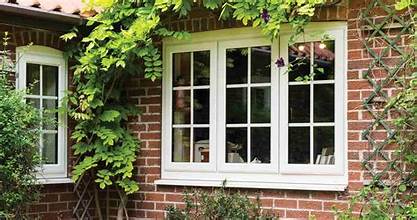Windows play an essential role in shaping the comfort, energy efficiency, and overall appearance of your home. Among the different styles available today, uPVC Casement Windows are one of the most popular choices for homeowners. Known for their durability, low maintenance, and versatile design, these windows can dramatically improve both the functionality and aesthetics of your living space. However, with so many variations on the market, choosing the right ones for your home can feel overwhelming.
This guide will help you understand what makes uPVC casement windows such a practical choice and walk you through the key factors to consider when selecting them.
What Are uPVC Casement Windows?
uPVC casement windows are hinged windows, typically opening outward like a door. Made from unplasticized polyvinyl chloride (uPVC), they offer a long-lasting, low-maintenance alternative to traditional timber frames. These windows are available in a range of styles, sizes, and finishes, making them suitable for both modern and traditional homes.
Their flexibility and functionality make uPVC Casement Windows a preferred option for homeowners looking for a blend of performance and style.
Benefits of Choosing uPVC Casement Windows
Before diving into the selection process, it’s worth knowing why these windows are so widely recommended:
- Durability: uPVC is resistant to rotting, warping, and corrosion, ensuring a long lifespan.
- Energy Efficiency: Double or triple glazing options with advanced seals help reduce heat loss.
- Low Maintenance: Unlike wood, uPVC doesn’t require regular painting or sealing.
- Affordability: More cost-effective than timber or aluminium windows while delivering excellent performance.
- Noise Reduction: With the right glazing, these windows can effectively reduce external noise.
- Design Versatility: Available in multiple colors and finishes, including wood-grain effects.
Step 1: Choose the Right Style
The style of your windows has a huge impact on the look and functionality of your home. Common options for uPVC Casement Windows include:
- Side-Hung Casements: Hinged at the side, these open outward like a door.
- Top-Hung Casements: Hinged at the top, these are great for ventilation while keeping rain out.
- French Casement Windows: Two side-hung sashes without a central bar for unobstructed views.
- Fixed Casements: Non-opening windows that maximize natural light.
Think about your home’s design and the level of ventilation and accessibility you need.
Step 2: Consider Energy Efficiency
Energy efficiency should be a priority when choosing windows. High-performance uPVC Casement Windows come with features such as:
- Double or Triple Glazing: Helps keep your home warmer in winter and cooler in summer.
- Low-E Glass: Reflects heat back into the home while allowing sunlight in.
- Gas-Filled Units: Argon or krypton gas between glass panes adds insulation.
- Thermal Break Frames: Prevent heat transfer through the window frame.
Selecting energy-efficient windows can significantly reduce heating and cooling costs over time.
Step 3: Prioritize Security
Security is another important factor when investing in new windows. Quality uPVC Casement Windows should come with:
- Multi-point locking systems for added protection.
- Reinforced frames to withstand forced entry.
- Toughened or laminated safety glass.
Windows are a potential entry point for intruders, so ensure your choice balances aesthetics with robust security features.
Step 4: Decide on the Right Glazing
Glazing not only affects energy efficiency but also determines noise reduction and privacy. Options include:
- Clear Glass: Ideal for maximum natural light.
- Frosted Glass: Provides privacy for bathrooms or street-facing windows.
- Acoustic Glass: Perfect for homes near busy roads or airports.
- Tinted or Solar Glass: Reduces glare and protects against harmful UV rays.
Selecting the right glazing ensures your windows meet your household’s specific needs.
Step 5: Choose the Right Finish and Colour
While traditional uPVC was often limited to white, modern uPVC Casement Windows come in a wide range of finishes and colours. From sleek grey tones to wood-effect finishes, you can customize your windows to complement your home’s style.
Neutral shades often provide timeless appeal, while bolder colours make a contemporary statement. Powder-coated finishes ensure long-lasting colour without fading.
Step 6: Work with a Trusted Supplier
No matter how high-quality the windows are, poor installation can lead to drafts, leaks, and reduced performance. When selecting your uPVC casement windows, make sure you:
- Choose a reputable supplier with positive reviews.
- Check for certifications such as energy performance ratings.
- Ensure professional installation with warranty coverage.
- Ask about aftercare and maintenance services.
Working with the right supplier ensures your investment pays off in the long run.
Step 7: Set a Budget
uPVC Casement Windows are generally more affordable than aluminium or timber alternatives, but prices vary depending on size, glazing, and custom finishes. While it’s tempting to go for the cheapest option, investing in quality will provide greater energy savings, security, and durability over time.
Conclusion
Choosing the right uPVC Casement Windows for your home involves balancing style, functionality, energy efficiency, and budget. With their durability, low maintenance, and design versatility, these windows offer an excellent return on investment. By carefully considering your home’s needs, preferred finishes, and trusted suppliers, you can transform your home into a more comfortable, stylish, and energy-efficient space. Get More
The right windows don’t just frame your view—they enhance your lifestyle. Invest wisely in uPVC casement windows, and you’ll enjoy their benefits for many years to come.





